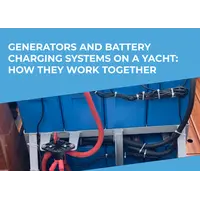In this article you will learn how fenders, when properly selected and placed on the vessel, can significantly save your yacht maintenance costs. But first, let’s talk about what they are and how to use them properly – you will not see any financial benefits if the product is misused.
What Is a Marine Fender
Marine fenders are protective accessories that are divided into two main types: mooring and boat fenders. Their design is developed taking into account the fact that the fender should work simultaneously as a shock absorber, bump stop and damper. That is, in a collision of two offshore objects (a boat against another vessel or a mooring wall), the fender must take on all the impact force, distribute it over the entire area and volume. In this case, the impact force at the point of contact decreases, and after the energy dissipates, the subsequent impact is already much weaker. As a result of the damping properties of the fender, the amplitude of the boat's oscillations on the wave is extinguished.
Since the article will focus on boat fenders, their object of protection is separate parts of the vessel that are at risk of being damaged when moored to a pier or side of another boat.
In the first case, without these protective elements the sides, bow or stern could be damaged when the hull hits the quay wall or the edge of the floating pier. The same damage can also be caused by unsuccessful maneuvering in a marina, lagoon, narrow lock, as well as when mooring side by side, especially if the sides of neighboring ships are much higher.
To prevent such risks, experienced owners of yachts and boats use fenders of various configurations, usually made of polymers and polymer mixtures, to protect the sides, bow and stern of the vessel.
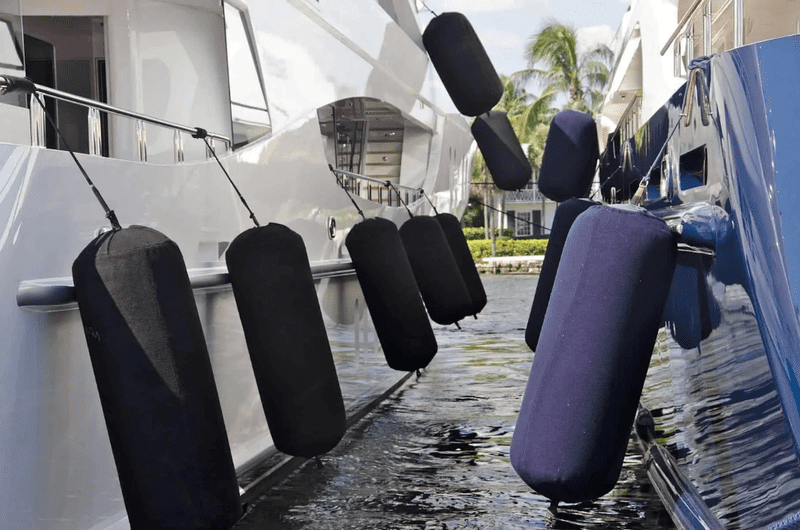
How Much Can You Save on Repairs Thanks to Fenders
Remember to keep in mind when calculating that it's not just your boat that's usually damaged in a collision, and insurance companies can be very picky about the details. Therefore, the purchase of fenders will be a trifle compared to the cost of repairing your own and someone else's boat, and maybe a floating berth.
The repairs cost is highly individual, it depends on the amount of damage done, size of the yacht and the company’s price tag. But usually even fixing a light dent will end up costing you thousands of dollars in repairs, loss of your reputation in marine community and, possibly an invoice from another yacht owner.
In order to avoid such situations, we need to know about different types of fenders available – choosing right models for every part of your boat will allow to maximize the effect from your investment into safety.
Types of Marine Fenders
All modern fenders for yachts and boats are made of polymer materials, the most popular of which are:
- soft rotoformed PVC, from which inflatable models are made;
- foamed polyvinyl chloride;
- reinforced rubber;
- EVA (ethylene vinyl acetate) with high elastic properties;
- integral polyurethane foam, the protection of which does not require inflation.
This is a very short list of materials that are used for small river and sea fleets. Their distinguishing feature is lightness, so that the products can be easily lifted and hung overboard on cables. For large ships, other types of dampers are used, which are not necessary to mention in this article.
Fenders for small fleets can be of various configurations and designs:
- cylindrical inflatable with one or two eyes, which can be placed both vertically and horizontally;
- cylindrical with a through hole;
- spherical with an eye or a through hole;
- flat inflatable and one-piece to protect the sides;
- segmented inflatable and solid for wrapping cylindrical elements (racks and railings);
- V-shaped to protect the bow of the vessel;
- in the form of an outboard ladder (step-shaped), with 1-4 steps;
- toroidal to protect the bow from anchor strikes;
- rotating on a bracket, etc.
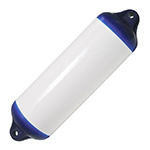 Cylindrical Fenders
Cylindrical Fenders 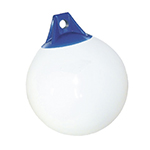 Round Fender
Round Fender 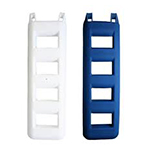 Ladder & Steps Fenders
Ladder & Steps Fenders 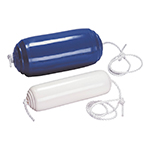 Thru-hole Fenders
Thru-hole Fenders 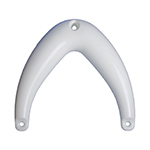 Bow & Stern Fenders
Bow & Stern Fenders 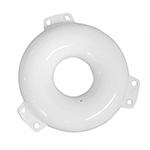 Ring Fenders
Ring Fenders 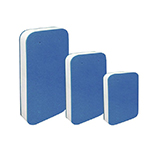 Cushion and Flat Fenders
Cushion and Flat Fenders 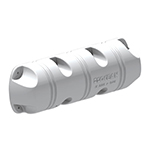 Dock Fenders & Accessories
Dock Fenders & Accessories 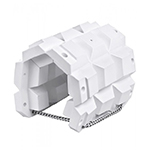 Pile Fenders
Pile Fenders As you can see, manufacturers of marine accessories have provided for any needs of yachts and boats in the protection of sides, stern and bow.
Boat Fender Locations
From the previous section, it can be seen that manufacturers offer protection for almost all parts of the vessel, including pulpits, lifelines and rails. But still, the most popular fenders are designed to protect the sides, bow and stern. That’s where most “fenderless” boats get damaged, having to undergo several repair procedures afterwards.
You can pick up a set of fenders with a great guarantee of protection if you know the route and the features of the water area. Mooring in areas with strong tidal or tidal waves, for example, requires more substantial protection. In this case, instead of cylindrical fenders, it is desirable to have pear-shaped ones on board.
When choosing fenders, you can always seek advice from the experts of the topRik marketplace. All of us are practicing yachtsmen and skippers who will give you free advice based on our own sailing experience in the waters of the Mediterranean and the Atlantic.
How to Choose Fenders According to the Dimensions of the Boat
Before we can say that we avoided unnecessary spending, you need to make sure that you are not buying too much fenders (increased costs) or too little (low protection). To ensure reliable protection of the yacht when maneuvering during mooring, one should rely on the ratio of the size of the vessel and the dimensions of the fenders. Empirically, the maritime community has determined the following options for selecting fenders by number, diameter and length.
- Cylindrical inflatable fenders should cover ⅔ of the side that rises above the water. Spherical and pear-shaped fenders have an increased damping effect, so it is enough that they cover ½ of the freeboard.
- The maximum distance between side fenders is 2.5 m (the less the distance, the more reliability you get), but their minimum allowable number on each side is 3 units.
- The diameter of cylindrical fenders depends on the length of the boat: for every 1.2 meters of the length of the yacht, there must be at least 2.5 cm of fender diameter.
Vessel Repair Costs When Mooring Without Fenders
We hope we were able to convince you that the presence of fenders in high-impact areas of the vessel plays an important role in the maintenance of the yacht: they significantly reduce the cost of repairing the sides, transom and bow, including the bowsprit and stem. Some types of fenders will protect the bow of the boat from dents and scratches when lifting the anchor.
You can’t ignore scratches on the hull of a boat, especially if it is made of fiberglass, and other modern polymeric materials, composed in the form of a sandwich panel. This is the inlet for moisture and the birthplace of the osmosis process, which is devastating for modern yachts and boats. That is, even minor initial damage can lead to the destruction of the hull. The inert stage of osmosis lasts several years before its destructive effect in the form of swelling becomes visually noticeable.
It is up to the owner of the boat to make sure that the surface part does not become an entrance for the osmotic process (there are specific protection methods for the bottom). Now just imagine that you have to "treat" the boat from osmotic destruction, that is, remove the entire gelcoat, clean the hull of bubbles, dry it, and then restore the coating. Now compare the cost of this process with the prices of fenders.
TopRik and SimpleSail experts shows that the presence of side, bow and stern protection can significantly reduce the cost of maintenance. An hour of work with fiberglass costs 35 euros, but based on our experience, this work takes many hours depending on the size of the boat – work that could be avoided if you use two or three inflatable fenders of different diameters. And let’s not forget about your own time lost – waiting until the boat is fixed instead of actually using it is no fun. Another plus of the fenders is the fact that their presence prevents hull wear and prolongs the overall life of the boat.
It wouldn’t be fair to ignore the maintenance costs of the fenders themselves. Could it be that you pay more for their maintenance than for the occasional repairs? Let’s see.
Fender Maintenance Costs
You can easily find out what it can cost to buy fenders in our marketplace if you contact topRik experts or visit our fenders for sale category. It all depends on the dimensions of the yacht and the chosen model.
Fenders require regular, but not frequent care - they are cleaned with the simplest means. To facilitate this work, you can buy covers for fenders, which, after the end of the season, are simply handed over for cleaning.
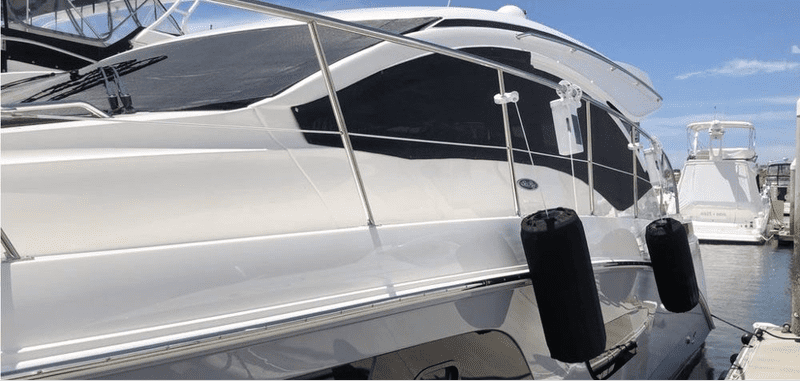
Covers will keep protective devices in a presentable form for a long time.
The service company usually takes care of the preventive inspection and checking the pressure in the fenders - this is another expense.
Sometimes in a hurry you can damage the fender valve, which can also fail during prolonged or improper use. For such an unforeseen occasion, we advise you to buy a couple of fender nipples before going to sea.
Another item of expenditure can be associated with the equipment of a place to store fenders on a yacht. Depending on the size of the vessel and the preferences of the owner, the fenders can be stored in a special large locker or in specially designed baskets, which are usually located on rails. The configuration of the baskets depends on the size of the boat and fenders, as well as the tastes of the owner.
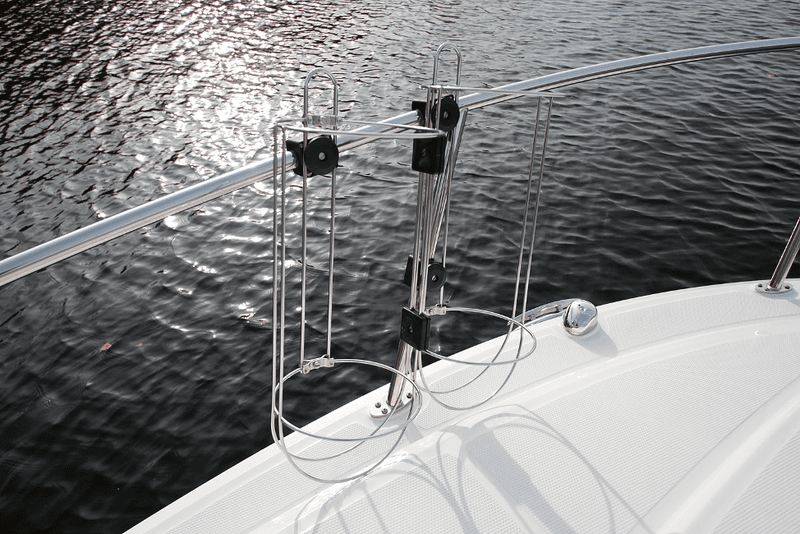
Of course, already fixed fenders from such baskets can be quickly hung overboard, without wasting time moving them from the lockers and further fastening them to the cables.
The advantage of both storage methods is that dampers can be stored in an inflated state, instead of pumping them before mooring.
That's all the fender costs, most of which you won't have to repeat year after year. The service life of fenders allows you to forget about their price tag for a long time and the investment overall is still much lower than paying an invoice for the damage you’ve caused during mooring.
Conclusion
Regardless of what sea routes you decide to conquer, what marinas, ports and locks you stay at, what berths you moor at, what level of skipper skill you have, your vessel cannot do without a set of fenders.
Modern products allow you to reliably protect all parts of the yacht of the most complex configuration, including trimarans, from damage during mooring at the quay wall, as well as maneuvering in narrow water spaces of natural or artificial origin.
Above, we talked about what costs you can avoid if your boat is equipped with marine fenders of the required size and quantity. But there is another important aspect, which, of course, can also be valued in terms of money, since the treatment of people can cost even more than the “treatment” of a boat. By reducing the impact of impacts on the rocking of the boat, the risk of injury to people on board is also reduced, and the health of relatives, close friends or teammates is difficult to evaluate in banknotes.



